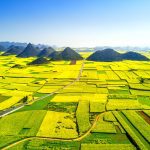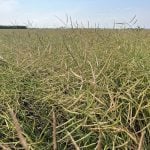Comparing your own farm to the U.S. average can be done fairly easily if you stick to direct costs such as seed and fertilizer. The USDA Economic Research Service has a cost-of-production spreadsheet at www.ers.usda.gov/data-products/commodity-costs-and-returns.aspx, including average costs and returns for corn, soybeans, wheat, pork and even cow-calf production, among other commodities.
You can also plug in your own numbers as a guide to see how your farm compares to averages in different regions south of the border. However, be careful with your comparisons. In particular, be aware that some provincial crop budgets do not include costs for land, overhead and unpaid labour that are included in the U.S. information.
Read Also

Tips for how to be fair to all siblings during farm succession
family walking through a field
“Line-by-line comparisons could be done on the direct costs,” says John Molenhuis, business analyst for the Ontario Agriculture Ministry. “But it would be more difficult for the other costs without knowing what was included…”
As an example, the ERS soybean operating costs average in 2011 was $138.84 per acre, with total costs at $401.61. Based on 47 bushels per acre, soybeans in the U.S. netted $123.75 per acre, which meant it was a good year for the average American grower.
The picture in wheat wasn’t as bright. Wheat operating costs range in at $121.56 per acre, climbing to $285.76 per acre when overhead costs are added, including hired labour, opportunity costs for unpaid labour, capital recover for machinery, opportunity costs of land (rent), taxes and insurance, general farm overhead.
This netted only $2.89 per acre in margins for the average producer, based on prices at $7.35 per bushel, a yield of 38 bushels per acre and an average crop size of 443 acres. (Almost 70 per cent of the crop was winter wheat.)
The USDA forecast for 2012 and 2013 is more of the same for corn, soybeans and wheat. Obviously, however, the drought is a new and unknown complication.














